Sonic: The Core Design and Beyond pt.4
 Tuesday, February 3, 2009 at 9:09PM
Tuesday, February 3, 2009 at 9:09PM Let's face it. Sonic has not aged in the same way that Mario has. The latest console games Sonic Unleashed and Sonic and the Secret Rings are sloppy at best. In fact, none of the Sonic games are as finely crafted as Super Mario Brothers for the NES. Even the Sonic Rush Adventure, my favorite Sonic game, leans too far to the side of manic, fast action gameplay with abstract mechanics for my tastes. Sega has attempted to make each next-gen Sonic game the one that "returns to form," but I don't think that's possible. Not only are the developers making mistake after mistake in terms of game design, but they're constantly chasing after a new "cool Sonic" resulting in Sonic going through a sort of pop culture "flavor of the week" with every game. Check out some of the flavors below.
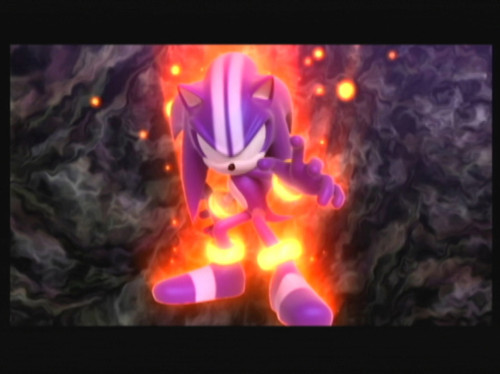
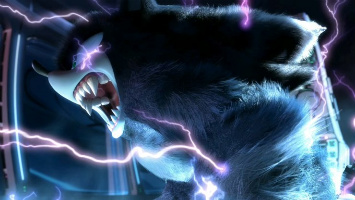

What's cool about Sonic is simple. What of the core design needs repair and how to do it is more complicated. The purpose of this article, the 4th and final article in this series, is to highlight the essence of Sonic and to lay down the foundations of a fully repaired, next-gen Sonic game.
For inspiration, I looked to the videos below. Before continuing you should definitely view the first video. If you have time, view them all.
Sonic the Hedgehog: The Movie
The Sonic Attitude (ie. the essence of Sonic)
Before I discuss the core design of a true next-gen, repaired Sonic game (from here referred to as Sonic Beyond), I wanted to say a few things about the essence of Sonic. Sonic isn't humble like Mario whose catch phrases include "let's to go," "alrighty," "just what I needed," and "thank you so much fora playing my game." Sonic sports a playful, taunting attitude: "Come on! Step it up!" "You're too slow!" etc.
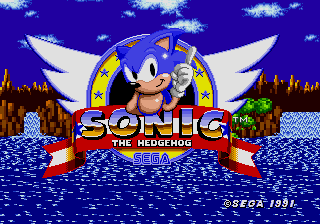
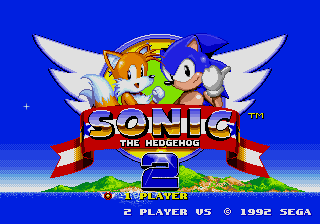
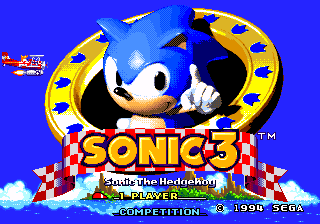
Look at that cool, smug face. That's it. That's the attitude.
As you can see in the videos above, Sonic's speed gives him the ability escape and dodge danger. Because Sonic can run really fast to escape most situations, he's developed a taunting attitude that allows him to play on the edge of danger. This is a large part of who Sonic is, yet his games are heavily weighed down with exploration, jumping, and a racing elements. If the player's main priority is to get to the end of the level or to shave off seconds from their race time, PLAY never becomes a significant part of the experience. PLAY is how a player expresses him/herself in a game system that's balanced to include player controlled difficulty, momentum, flow, and superfluous actions.
Basically being able to goof off and still get the job done captures that "I'm untouchable" Sonic attitude. PLAY is something that players naturally seek. Even games as serious and competitive as fighters feature taunts. Super Smash Brother's Brawl features 3 taunts per character (1:50), and this doesn't even include the taunts that players have made up. When expressing yourself, anything can be a taunt. And in the absence of an included taunt, players make up their own. In Halo, players use the CROUCH mechanic to kneel over fallen enemies, to dance, and communicate to each other in a primitive Morris code. Everything in a game shouldn't be about strictly reaching the goal. This sense of freedom of expression, movement, and PLAY is what the Sonic Beyond must capture.
Perspective
In a video game, visuals are of the utmost importance. If you can't see what's going on, you're left with using only 20% of your sensory perception, which isn't enough for most games. Along these same lines, if you can't seen the game with enough time to process the information and make an informed decision, a stress is put on the entire dialog between the game and the player.
The 2D Sonic games are too zoomed in making it hard for players to successfully navigate as well as build the bigger picture of the level in their minds. Sonic Beyond must change its game perspective so that more is visible. Sonic Unleashed uses the wide screen to increase the horizontal view compared to the classic games (see above). Unfortunately, the vertical view is about as limited as before. The Sonic Rush series is the exact opposite. The DS allowed for the Sonic Rush games to open up the vertical view, but the dual screens couldn't help the increase the horizontal view limitations. Though the RUSH mechanic can keep players safe from running into a sudden enemy, it also increases the speed of the game, which is a dangerous trade off. As silly as the suggestion may seem considering how much I appreciate the dual screen gameplay design of the Sonic Rush games, Sonic Rush would really benefit from a map screen.
There are a few solutions Sonic Beyond can take. The entire 2D level can be projected onto a large screen or a wall so players can literally play on the big picture with everything in sight and no surprises. Though this idea is intriguing, it's silly and impractical. Another clever solution is the game can automatically zoom out as Sonic increases in speed. The faster you go, the more you'll be able to see ahead of you, and the more time you'll have to react. The problem with this idea is that players will lose track of Sonic and other small details as the screen zooms out. At high speeds, the ratio of Sonic to screen would put a great stress on the player's eyes and the overall balance of the game presentation. The more the camera zooms out, the more non pertinent level elements creep into the game view. Because you wouldn't be able to interact with many of these extra elements when the camera is zoomed out, they would do more harm than good cluttering up the visual presentation.
The final and best solution is simply making Sonic Beyond a 3D game. The 3rd person camera is ideal for displaying a variable amount of a 3D level. Whether pulled back behind Sonic along the ground, up above looking down, or to the side creating a classic 2D side scrolling perspective, the flexibility is undeniable and essential. Mario Galaxy pioneered the tech and now Sonic must follow in Mario's footsteps. There is simply no other way to get around the limitations of the 2D Sonic presentation.
Sonic the Man, the Ball, and the Pin Cushion.
Sonic Beyond is designed with a clear and functional difference between each of Sonic's 3 states: Man, Ball, and Pin Cushion.
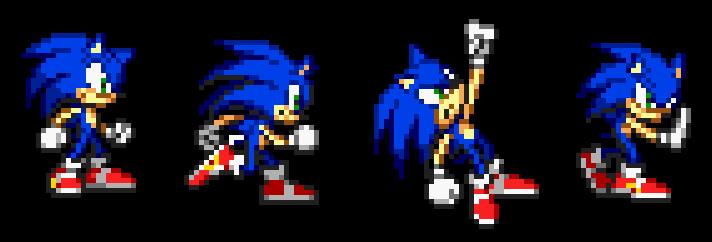
When Sonic is unballed, he stands upright on two legs like a man. In this form, Sonic is free to use his hands to grab onto objects. In man form Sonic has the most control over his direction and momentum when running. Sonic can also jump the highest when in this form. The biggest draw back to man Sonic's high maneuverability is vulnerability. In man form, Sonic can be hurt easily.
The most interesting design feature for man Sonic is that his speed gradually accelerates. This mechanic is very similar to the RUN mechanic in Okami and Devil May Cry 4. This design will influence players to view, process, and maneuver around the game world to prevent any slip ups, slow downs, or stops in order to preserve momentum. In this way, Sonic Beyond's RUN mechanic achieves a similar level dependant chaining system that Sonic Rush has without using an abstract game mechanic.

When Sonic curls up into a ball, all of Sonic's properties and abilities change. Basically, when Sonic turns into a ball, he acts like one. This includes bouncing off of objects and rolling down hill more quickly than Sonic can run downhill. Bernoulli's principles of fluid dynamics also applies to Sonic in ball form. In other words, Sonic should be able to curve through the air like a baseball/tennis ball/soccer ball, roll around obstacles like a bowling ball, change direction after hitting the ground like a tennis ball, and create lift like an airplane wing.
All of these abilities greatly distinguish Sonic the man and Sonic the ball. To create a balance between the two so that both are functionally useful in a variety of situations, the ball form of Sonic needs limitations. Unlike in previous Sonic games, in Sonic Beyond ball form Sonic won't be able jump as high or control direction and momentum as well as man Sonic. In addition, Sonic Beyond won't feature a SPIN DASH or RUSH mechanic to give the player instant speed. Sonic Beyond is all about understanding the relationship between speed, momentum, control, and space. To do this players have to understand the difference between having legs (man Sonic) and rolling around (ball Sonic). This design also creates gameplay that relies on potential energy. To reach high places, players have to platform vertically in man form. To turn the potential energy into horizontal speed players must use the ball form. Man form has reduced air control. Ball form has reduced sticking ability when landing. The pros and cons complement each other.

Sonic, being a hedgehog, has the incredible ability to expose his spines. This means he can be smooth like a ball, or dangerous like a pin cushion. Like in Sonic 3, in Sonic Beyond Sonic is able to quickly flare his spines. Doing so when coming into contact with an enemy creates an attack. Flexing Sonic's spines when colliding against a wall Sonic gives players the ability to tech or ukemi to stop in place instead of bouncing or rolling away.
Level design
There are two things that really distinguish the platforming in 2D Mario vs 2D Sonic. Both have a factor of momentum that is well tuned for each game. Both have a sense of speed and flow. However, when standing on a hill/incline/slanted surface Mario jumps straight up while Sonic jumps perpendicular to the surface. This difference allows Sonic to run and platform off of the ground as well as ceilings and walls. This simple physics based feature made the Sonic paltformers much more receptive to curved and hilly level design. It's no wonder the loop is one the lasting hallmarks of Sonic level design seeing how it emphasised momentum and this perpendicular jump feature. The hills in Sonic are also emphasised by Sonic in ball form. Mario has nothing like the ability to rolling down hill. At best Mario can only slide.
Fortunately for Mario, the other distinguishing feature of his 2D platforming design is that Mario and all the enemy/level elements are quantified to the brick unit. This quantification makes not only all of Mario's gameplay fit together like Legos, but it is instrumental in communicating to the player. Because Sonic is so comparatively analog both in the size of the enemies and the design of the level elements, the platforming challenges were less precise and more open.
The levels in Sonic Beyond must be simple with a strong sense of organic unity. Like in Super Mario Galaxy, a level can be as simple as getting to the top of a single mountain. With Sonic Beyond's 3D level design, the player is free to get from point A to point B in a variety of ways. The 3D design naturally yields itself to creating alternate paths. Additionally, the abstract timer that encourages players to move through a level quickly in the classic 2D Sonic games is replaced with organic timers. Instead of being encouraged to reach a point before the timer hits 0 because the game will kill you, players will have to reach a point because of some tangible conflict like the bridge is about to break, the cave is about to collapse, the ring will soon fall over the waterfall, or Robotnik is getting away. In these scenarios, the stakes are clear, the timing is obvious, and the consequences are real. If you don't catch Robotnik now, you know you'll have to face him later. In fact, the threat of drowning underwater in the classic Sonic games and the interplay grabbing air bubbles is a great example of an organic timer.
Sonic Beyond implements more advanced types of level design including folded, accordion, and pure organic. The basic idea is that even the fastest thing alive can't be everywhere at once. The Flash and Super Man are often put into situations where they have to struggle with the reality that even they can't be in two places at once. In Batman: The Dark Knight, the Joker set up a similar scenario for Batman forcing him into a situation where he could only save one of two hostages. It is this dynamic and the juggling of events separated by space that Sonic Beyond focuses on.
Enemy Design
Many of the Enemies in Sonic Beyond are designed to function more like toys/obstacles than harmful weapons. When a game is designed with more than one way to win, the game elements (level/enemy) have more range to work with. In Advance Wars, players can win by capturing the enemy's base, destroying all of the enemy units, and/or capturing enough properties. In Pikmin 2's battle mode players can destroy the opponent's avatar, destroy all of the opponent's Pikmin, capture 4 yellow marbles, or capture the opponents special red/blue marble. With so many ways to win, strategies can become more varied than simply optimizing toward achieving the one goal.
In Sonic Beyond, some enemies are designed to slow Sonic down rather than hurt him. Other enemies transform the level over time to Sonic's disadvantage. For example, if an enemy was busy cutting the ropes on a bridge, if Sonic doesn't get there in time players will be forced to find another way across the chasm.
Like in the second video above, enemies should be designed to give players something interesting to do. Each enemy can be designed so that Sonic can handle them using unique, contextual attack strategies like in God of War. But instead of reducing the game to a simple quick time event, the gameplay will remain dynamic and ultimately in the player's control.
Ring Design
In the same way the number and grouping of the coins in the 3D Mario games had to change because of the increased visual range due to the camera system, the ring design of 2D Sonic doesn't translate well into 3D. Because dying and getting hurt in Sonic Beyond is greatly diminished, holding onto lots of rings would be less important. Instead of sprinkling rings all throughout the levels of Sonic Beyond, the rings are few, far between, and carefully placed in the levels to create platforming challenges.
To sum up, fixing the core Sonic design issues starts with a few changes that subsequently changes the whole game. The evolution is as follows:
- The 2D side scrolling perspective had to be expanded into 3D to achieve a flexible camera/perspective solution.
- Following in Mario Galaxy's footsteps, the way a character interacts in a 3D world provides a layer of engagement which allows for a game to feature less enemies and a more detailed action.
- To match the level of detail that is an inherent part of 3D games, Sonic's core abilities were redefined to complement each other, taking up a unique design space for Sonic the man, ball, and pin cushion.
- To reduce the clutter of the old ring design, the dependency for rings as health has been removed. Following this design decision, the ring count can be greatly reduced making each ring (placement and obtaining) more significant.
- To make better use of the 3D space the levels and the challenges are designed to fold on themselves creating pure organic challenges.
- The abstract timers (clocks) of the old Sonic games are converted into dynamic organic timers (scenarios).
- Because the level in are folded and the goals are organic, the enemy design is free to explore design spaces other than simply giving Sonic damage.
That's it for my Sonic repair. I have more specifics on the game, but they're not relevant to the core topic of this series. After all, I'm not actually working on the next Sonic game. Now that I understand Sonic, I can finally put away the old Sonic vs. Mario issue and stop playing Sonic Rush Adventure. I see more sloppy games in Sonic's console future. And that makes me wish for the game that would take Sonic beyond.
 Platformer,
Platformer,  Sonic in
Sonic in  Genre,
Genre,  Level Design,
Level Design,  Mechanics,
Mechanics,  Review & Repair |
Review & Repair |  Permalink |
Permalink |  Print Article
Print Article 

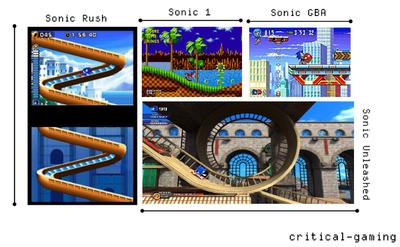
Reader Comments (9)
there is an open source 3D sonic engine on the go, you should take a look. I have got a look on the code and sonic beyond would be easy to adapt with it. And you can level design the game pretty easily. It is not finish yet but the relased version i have is enough to build on, all basic are here, there is not yet ball physics nor enemy but that's easy things to do.
How to make level (read dscription for link towards tools)
http://www.youtube.com/watch?v=dUkqD0nxlSk&feature=related
The port of the project from blitz3D to C++ thanks to BLITZ SDK (http://www.blitzbasic.com/)
http://www.moddb.com/games/blitz-sonic
I do understand this analysis is under the strict framework of "new classicism therory" of video games, but even within this there is some observation i do not agreed with, concerning static space with rings, the way enemy are use (and the VC réedition mess up some timing with enemy), and the use of spindash (actually create to remove the static space of some momentum based challenge like rings where you have to tediously go backward to rebuild momentum, in 3D that can be different with alternative path). I cannot expend here, however...
some (crappy) mods made by a young fans with the on progres engine:
http://www.youtube.com/watch?v=gW5AkBjxbt4&feature=related
http://www.youtube.com/watch?v=osQQpbhhJ-0
http://www.youtube.com/watch?v=LXajAP3LRzA&feature=related
http://www.youtube.com/watch?v=1BZoneUUYLU&feature=related
http://www.youtube.com/watch?v=qNsRATdDrPA&feature=related
http://www.youtube.com/watch?v=UU2rsJfCUtg&feature=related
@ neoshaman
Thanks for such a detailed and interesting comment.
I looked into the videos/sites you linked to. The project engine reminds me of a 3D sonic game I played a long time ago.
You said that you couldn't explain yourself in detail here. Do you have the time to write something out and email it to me?
I'll just say a few things in response....
For the classic Sonic games at least, the issues I have with the ring design, enemy design, and the spin dash are all interconnected and result from the limited side scrolling perspective. From having no spin dash, to a spin dash, to a RUSH mechanic the emphasis on platforming (ie. understanding and reacting to the different level elements in order to progress or preserve momentum) is reduced to an abstraction.
The RUSH mechanic is the best of all for recovering fallen rings. All I have to do is RUSH to the left and then RUSH to the right, and I recover almost all of my rings back. I understand that you can only do this if you have RUSH meter and that the enemy take away a significant amount of the tension gauge after hitting the player, but I'm left to wonder why rings are so important in the first place.
In the classic Sonics, players have couldn't save. Therefore, all the lives they could collect increased their chances of success. Gathering 100 rings before the end of the level was one way of doing that. And so the player tried not to get hit and explore as much as possible to eventually beat the game. Since Sonic 3, we've been able to save our progress. This feature diminishes the function of rings somewhat.
It may seem tedious to go back and pick up fallen rings or to move back to gather enough running momentum, but I think this is necessary. There are times in Mario where players have to move back, get a running start, and carefully set up jumps to progress. If Mario didn't have to do these things, then the individual platforming challenges in the levels would diminish. Instead of each challenge connecting to the areas before and after it because of how Mario's running momentum changes his JUMPs, each challenge would simply be a single, isolated obstacle. In Sonic's case, the spin dash creates artificial flow with stop-start gameplay. see video http://youtube.com/watch?v=cApvBKMckzg
If Sonic is going to be the king of speed, then learning to keep one's momentum is key like it is in any racing game. I know the spin dash speeds things along, but for what it gains in convenience it loses in design. Fortunately (or unfortunately) the level design in Sonic isn't suited for the higher (Mario) level platforming anyway. So perhaps it was better for the classic games to have the spin dash.
A couple questions and comments:
The Camera
This game will use the 3D camera that Super Mario Galaxy pioneered? How is it different from other 3D Mario games? How is it different from 3D sonic games? You mention that the camera can follow from behind or pull to the side. How is this controlled?
Levels
I can't figure out if this game will have will this be a fully 3D level design, classic 2D level design (New Super Mario Brothers), or 2.5D (Little Big Planet). If it is 2D, why would you ever take a 3rd person, behind sonic perspective? You mention 2D level, but the Super Mario Galaxy camera comments get me confused.
These types of organic timers split across a level drastically improve the Dynasty Warriors / Samurai Warriors games, though they aren't nearly as well implemented as you describe.
I'm having trouble figuring out how pure organic level design would look like in a Sonic game. I'm guessing the Dynasty Warriors model (translated to the 2D plane) is closer here than a 3D Mario model because of Dynasty Warriors use of timers and a single purpose for that level. 3D Mario focuses on exploration and multiple goals. Some goals might have a timer, but you usually aren't forced to balance timers across a level.
Sonic the Man vs. Sonic the ball
How does Sonic switch back and forth between the two forms?
You mention Sonic the ball has reduced sticking form when landing. Why would using spikes to stick to the ground be any different from a wall?
I like the idea of adding tennis physics to Sonic's flight and landings. Unfortunately, you only get 3 new options here, as far as I can tell, with different intensities. You have backspin in the air to drop short and backspin on the ground to stop / change direction.
You also have forward spin to generate positive lift. Most of a bowling balls tricks involve side to side movement along the ground, requiring full 3D movement.
Would using spines increase the effects?
Enemies
From the attitude section, I really wanted to be able to creatively use the level to attack enemies. I don't mean dropping rocks on them to kill them. I want to get an enemy looking in one direction, hop around out of their sight, and hit them from behind. I also want to be able to move faster than they can turn to face me, using special features of the level to maintain speed and change direction. It would also be cool to have enemies get effected by the properties of the level. Can I get an enemy stuck? Have them fall into a pit? reduce their motion or stop them from jumping with a low ceiling? Get them caught in tar? Have one enemy get hit by another's attacks?
Rings
I would like to see rings power up a special ability while power-ups are used for life. Powerups would effect the environment in different ways, and would be kept until Sonic gets hit. This gets beyond your scope a little though.
@ Bryan Rosander
I'm always thankful for comments and questions like this. It looks like you broke things down into topics. That makes it much easier for me to respond.
****************
The Camera:
You seem a bit confused about the camera system, which makes me think that you haven't played Super Mario Galaxy. Whether you have or haven't, look at this video starting at 4:46...
http://youtube.com/watch?v=R0ByZt_iKTY
The camera for the majority of levels in Super Mario Galaxy isn't controlled by the player. Somehow the developers designed a camera that is "smart" and flexible enough to perfectly follow Mario around as he platforms in 3D space (a little pun there). So whether Mario is jumping off the side of the planet, scaling a mountain, or maneuvering around inside a giant pill structure, the camera keeps everything of importance on the screen in a particularly dramatic way.
***************
The Levels
As you can see in the video I linked to and at the time I specified, the first area is like a normal 3D Mario 64 type level... that is until Mario jumped off the side and it flipped upside down. The little round planet areas are fully 3D spherical mini levels. And the pill Mario infiltrates is a (relatively) simple 2D level.
So to answer you question, Sonic Beyond features all kinds of different perspectives like in Mario Galaxy. If a part of a level works best in 2D, then it'll be in 2D. If an area needs to be wide open, then a large 3D area is best. If Sonic is racing Metal Sonic and the player needs a bit of freedom while being focused on the race, perhaps a 2.5D/LBP/Sonic and the Secret rings style level would be best.
As far as the pure organic design and the organic timers are concerned, you really hinted at a lot of good examples. You're right. The 3D Mario Games (particularly Mario 64) didn't exactly force you to get a specific star. Players were free to explore at their leisure and grab stars out of order. So just imagine the organic timers like in Dynasty Warriors, the freedom/exploration of Mario 64, AND the ability to achieve more than one goal in at a time. That last part is like in Banjo Kazooie. Skip to 3:32 to see how the player racks up all the collectibles in the level in 1 speedy run...
http://youtube.com/watch?v=dHDdp5__kuc
*************************************
Sonic the Man, Ball, Pin Cushion
Though fine tuning how Sonic can switch back and forth between forms is something that can best be done when playtesting/developing the game, I think that player would simply have to hold the B button to make Sonic go into a ball. (For the record, Sonic Beyond is only possible on the Wii for many reasons which I won't get into now). Going into ball form and spinning around commits sonic to that form until Sonic lands on the ground (from the air) or short hops into the air (from the ground). This system is very similar to the one that's already exists in I believe all of the 2D Sonic games. In this way, players have to use the level/ground/terrain to make the most of Sonic's forms/abilities. This design feature brings even more emphasis on gravity and 3D space.
In man form, Sonic can use his feet/sneakers to stops fairly efficiently. When in ball form, Sonic tends to roll around. So when Sonic hits the ground or any other surface as a spinning ball, Sonic's position is then the result of the physics. Using the SPINES ability to stick to wall or the ground is functionally equivalent to ukemi/teching in Super Smash Brothers. Sakruai puts it nicely...
http://www.smashbros.com/en_us/howto/technique/technique10.html
To answer your question, technically the player would be able to tech on the ground in ball form by using SPINES. I believe the drawbacks to doing this is a complete stop of one's momentum. And without a spin dash, this would be a costly maneuver.
Don't forget about side spin in tennis. Basically, because you can hit a tennis ball using the 3D impact of a racket, you can affect the ball in any 3D direction. It's the same for Sonic.
You're very keen to pick up on the SPINE mechanic's ability to influence Sonic's trajectories in ball form. This was one of the details I decided to leave out of the article (the post was already too long). Yes, when in the air or rolling along the ground/ceiling/wall, using the SPINES mechanic can give Sonic additional control.
***********
The Enemies.
Yes to everything you said about enemies. Playing around with the enemies will be some of the most engaging and fun things you'll do in the game. As long as the development team keeps things simple, they'll be able to design in a myriad of ways to take out the enemies that are far more creative than jumping/rolling on them.
To tell you the truth, I cut out the section I typed on power ups and Sonic friends. I like your idea for the rings. It reminds me of how rings worked in this Sonic cartoon. Skip to 30 seconds....
http://youtube.com/watch?v=UE7mXWzZWl4
Thanks again for taking my ideas so seriously.
Your critical analysis of these games is incredible. Its so much fun to read and join in.
*****************
The Camera
You guessed correctly, I haven't played Super Mario Galaxy yet. Its definitely on my list, but I go through games rather slowly. My roommate has it, but he might move out soon.
That camera is absolutely amazing. I thought a human was controlling it. I'm guessing that SMG's open level design made it easier to do. Would you want to restrict level design as much as they did?
*****************
The Levels
I'm really liking the idea of this level design.
You do mention completing multiple goals at once. I know that Super Mario 64 and Super Mario Sunshine both transformed the level in minor ways depending on which goal you were trying to achieve. Would you remove those restrictions?
I got confused when you didn't explicitly state whether Sonic was going to be a 2D or 3D game and assumed it would just be one. Being capable of transitioning between the two makes the design a lot clearer all around.
I played the first Jak and Daxter game for the PS2 and that seemed to have a good mix of set pieces and allowing you to achieve multiple goals at once.
Have you played any (Dynasty, Samurai, Orochi, Gundam) Warriors games by the way?
***************
Sonic the Man vs. Sonic the Ball
My confusion on stopping was that I thought stopping would be just as easy for Sonic the Ball as with Sonic the Man. Now it seems I will need to jump to use the spines to tech, which clears that up.
I agree that there are tons of ways to curve through the air with different spins. This seems like it would be an interesting replacement for the ability to move through the air actively, like most platformers.
Conversely, I'm now having trouble figuring out the bowling ball analogy. I can understand spin affecting your movement through the air and landing. I'm having trouble figuring out how spin affects all your movement on the ground though. Using spin with a bowling ball is fun because you give up control of the bowling ball. But I maintain control of Sonic the whole time he is on the ground. Or do I get something like racing physics when Sonic changes to a ball and is on the ground? Will I have racing physics the whole time with different properties? Do I start drifting / sliding immediately when Sonic changes into a ball or is it like Mario Kart?
***************
Rings
Yes! I love that show. The first season layered together the action of the various freedom fighters and everything else as well as any show I have ever seen.
That's exactly what I was thinking, though you can expand from there. Maybe different effects with different powerups?
@ Bryan Rosander
Round 2. Here we go!
******************************
The Camera
I don't think the level design would have to be restricted in Sonic Beyond. Even if some things had to be adjusted to keep the camera working smoothly, those changes would be small/insignificant to the design of the level as a whole.
I must admit that I'm not entirely sure what you mean by "restricted" and "open" level design. It would seem that these two ideas are contradictory. I think what you mean to say is does Sonic Beyond have to have small planetoids floating in "space" to make the camera work like in SMG. I don't think so at all.
*************************
The Levels
I believe the layered (folded) and organic design of the Sonic Beyond levels prevents the game from featuring tailored "missions" like in Mario 64/Sunshine. Everything should be as clear, simple, consistent, and organic as possible.
I haven't played any of the Dynasty/Samurai/Orochi/Gundam Warriors games. Sorry.
*****************
Sonic the Man vs. Ball
You picked up on another key detail. In order to gain the kind of air maneuverability that Mario/Sonic/Mega Man/and even Sackboy have, Sonic must spin through the air. The ability to curve around in the air also creates a sort of "homing attack" ability that many of the newer Sonic games have (Rush, Rush Adventure, Adventure, Adventure 2, Unleashed, Secrete of the Rings, Brawl).
For ball Sonic controls on the ground, I believe the feel would be very similar to a race car tire zooming along. Yes, you would lose an amount of direct control over Sonic. If you want direct control, Sonic man is perfect. If you want downhill speed and a small size, then ball Sonic is the winner. Remember, even in the 2D games when you curl up into the ball form, you no longer have control over Sonic's movement. The only thing you can do is jump out of it (or RUSH for the Sonic Rush games). I can image that the rolling ball sonic would have a degree of weight like a bowling ball and slide around a bit. Also, depending on the terrain, ball Sonic would roll around in different ways. To what degree exactly is all about fine tuning the game (which I can't do).
I*********************
RINGS:
I was reluctant to put shield powerups in Sonic Beyond (bubble, fire, electric). 1) The game is more organic than ever. So using a special shield is a less organic powerup than manipulating and interacting with the environment in creative ways. 2) When the shield covered up Sonic in this 3D game, it would obscure Sonic's character model. The reason why this is so significant is because now, more so than any other Sonic game, there's a a large amount of information the player must pay attention to tucked into a very small space on the screen. To play effectively, players will have to be mindful of Sonic's momentum, rotation direction in ball form, landing angle (like in Excite Truck), landing terrain types, and the distances between nearby elements in 3D space. If you obscure the screen by putting a bubble over Sonic, the visual would probably begin to become cluttered.
Perhaps it's time to think up some new powerups. Get a ring, and you can temporarily run on water. Perhaps you'll earn a speed boost that lasts until you are stopped/slowed down by something. Perhaps you can SPINE attack through harder material. Keeping everything organic and relevant in a simple way is key.
************************
The Camera
I don't know that much about how a good camera works, but I do know that its very difficult. Some examples:
The biggest problem is narrow hallways / alleyways, especially with turns or reversals of direction. The abrupt turn doesn't give the camera enough time to move. Also, there usually isn't enough room either. At best, the camera can move above the character, but that can be awkward for some people.
A similar difficulty is having a cluttered level, specifically with trees, buildings, and other tall objects. Moving between them and changing direction will mean that they occasionally occlude your view of Sonic and enemies.
SMG seemed to remove both of those problems. The level I saw didn't have much vertical movement, though I do know it is in the game. When it is used, it seems there is a single "tower" rather than multiple tall objects. Using floating platforms, transparency, and concave areas, I think you keep a lot of traditional Mario style platforming without a problem.
For Sonic's air movement, however, you're going to want have the camera follow Sonic from behind, so you can judge how the spin is affecting his side to side movement. I think following from behind is bad for traditional platforming because its difficult to judge distance, as opposed to the side. Following from the top would make it difficult to judge height.
Following from behind means it will be difficult to follow sonic if he ever abruptly changes direction, such as hitting springs, bumpers.
Does the camera here work differently and Sonic the Man and Sonic the Ball?
************************
Sonic the Man vs. Ball
Using the words "homing attack" just confuses me.
Car racing has static friction (grip driving) and sliding friction (drifting). Would you make this distinction for ball sonic?
************************
Rings and Powerups
For the organic timer based game design, the powerups need to reduce the time to perform some activity. This will include movement between subgoals and accomplishing a subgoal. I see powerups opening up shortcuts, transforming the level, and having different effects on the enemies.
Examples:
I add / remove / move dirt to create a ramp. The dirt allows me to do a momentum based running / ball jump to get to another part of the level much faster.
I drill out a lake, allowing it to fill an area below. Then I use the running over water ability to run over the new lake before it all flows into another area.
I push boulders into a pit to get over it. A strength? ability allows him to do that faster.
There should be multiple ways of achieving an objective so that these powerups just speed up the tasks most of the time. This makes balancing getting the powerups, using them to achieve their best objectives, and not losing the powerups to an enemy an important part of the gameplay.
************************************
Dynasty Warriors timers
In Dynasty Warriors, the entire battle is focused around completing objectives to give you time to kill the enemy commander without losing your own commander. The battlefield uses Origami folded level design, and you travel about the battlefield supporting sub commanders and accomplishing objectives in order to weaken the opponent's army. In many levels, you can also assassinate the enemy commander early army if you are fast enough.
This focuses you on always doing something productive and reducing slack as much as possible. If you feel an objective is in danger or more important, you might travel across the level to assist there. Playing coop allows you to split up tasks and makes achieving some objectives easier.
It usually also includes longer term objectives, like finding weapons and items in levels and fulfilling special objectives to get special items / weapons. Some of the longer term objectives you can achieve at the same time, though they many of them depend on the character you are playing.
@ Bryan Rosander
********************
The Camera
You brought up a lot of interesting points about the camera. For the most part, I think this is as far as we can take the discussion on this topic. It's hard to visualize specifics because there aren't any specifics. To respond to the issues you raised, I prefer to draw up diagrams detailing the camera system and the basics behind its design protocols. But at this time, I don't have the time to do so.
******************
Sonic the Man/ball
Are you not familiar with Sonic's homing attack ability. If not check this link out.
http://www.youtube.com/watch?v=r4vQGX6QKB0
I think that the normal (smooth) sonic ball would be more like a drifting car and using the SPINE mechanic in ball form will give you more grip.
*****************
Rings and Powerups
All good ideas. The way you're going about the ring/powerup design is very advanced and clean.
*************
Dynasty Warriors
That's a pretty good description of the game. The comparison between Sonic Beyond and Dynasty Warriors is a good one.
My confusion about the homing attack is that it sounds completely different from your spin maneuver mechanic. Sonic instantaneously accelerates to homing speed if he is in the air and attacks an enemy. He can use it to attack a series of enemies like stairs, hitting each one in succession to jump up to the next level. He can also attack a series of enemies to jump across larger pits. Enemies are usually set up expressly for this purpose, and it doesn't look too hard.
Conversely, the spin maneuver is physics based / inspired and uses momentum from the jump rather than getting it instantaneously. Sonic cannot change directions rapidly. Instead he must preserve his momentum and line up enemies to hit multiple ones. I can see giving the player the ability to adjust side to side motion some, but you'll have to rely heavily on the bounce off of an enemy to hit multiple enemies.